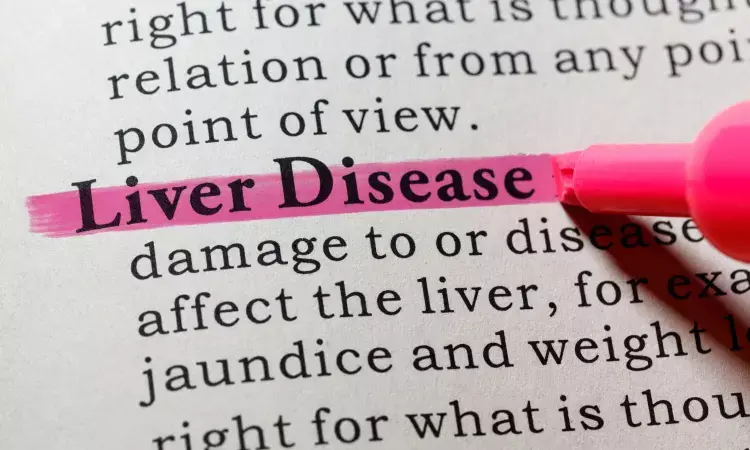- Home
- Medical news & Guidelines
- Anesthesiology
- Cardiology and CTVS
- Critical Care
- Dentistry
- Dermatology
- Diabetes and Endocrinology
- ENT
- Gastroenterology
- Medicine
- Nephrology
- Neurology
- Obstretics-Gynaecology
- Oncology
- Ophthalmology
- Orthopaedics
- Pediatrics-Neonatology
- Psychiatry
- Pulmonology
- Radiology
- Surgery
- Urology
- Laboratory Medicine
- Diet
- Nursing
- Paramedical
- Physiotherapy
- Health news
- Fact Check
- Bone Health Fact Check
- Brain Health Fact Check
- Cancer Related Fact Check
- Child Care Fact Check
- Dental and oral health fact check
- Diabetes and metabolic health fact check
- Diet and Nutrition Fact Check
- Eye and ENT Care Fact Check
- Fitness fact check
- Gut health fact check
- Heart health fact check
- Kidney health fact check
- Medical education fact check
- Men's health fact check
- Respiratory fact check
- Skin and hair care fact check
- Vaccine and Immunization fact check
- Women's health fact check
- AYUSH
- State News
- Andaman and Nicobar Islands
- Andhra Pradesh
- Arunachal Pradesh
- Assam
- Bihar
- Chandigarh
- Chattisgarh
- Dadra and Nagar Haveli
- Daman and Diu
- Delhi
- Goa
- Gujarat
- Haryana
- Himachal Pradesh
- Jammu & Kashmir
- Jharkhand
- Karnataka
- Kerala
- Ladakh
- Lakshadweep
- Madhya Pradesh
- Maharashtra
- Manipur
- Meghalaya
- Mizoram
- Nagaland
- Odisha
- Puducherry
- Punjab
- Rajasthan
- Sikkim
- Tamil Nadu
- Telangana
- Tripura
- Uttar Pradesh
- Uttrakhand
- West Bengal
- Medical Education
- Industry
Fast food consumption may raise risk of nonalcoholic fatty liver disease

California: Consumption of fast food is associated with NAFLD (nonalcoholic fatty liver disease), a potentially life-threatening condition characterized by fat accumulation in the liver, according to a study from Keck Medicine of USC published in Clinical Gastroenterology and Hepatology.
Researchers discovered that people with obesity or diabetes who consume 20% or more of their daily calories from fast food have severely elevated fat levels in their livers compared to those who consume less or no fast food. And the general population has moderate increases in liver fat when one-fifth or more of their diet is fast food.
“Healthy livers contain a small amount of fat, usually less than 5%, and even a moderate increase in fat can lead to nonalcoholic fatty liver disease,” said Ani Kardashian, MD, a hepatologist with Keck Medicine and lead author of the study. “The severe rise in liver fat in those with obesity or diabetes is especially striking, and probably because these conditions cause a greater susceptibility for fat to build up in the liver.”
While previous research has shown a link between fast food and obesity and diabetes, this is one of the first studies to demonstrate the negative impact of fast food on liver health, according to Kardashian.
The findings also reveal that a relatively modest amount of fast food, which is high in carbohydrates and fat, can hurt the liver. “If people eat one meal a day at a fast-food restaurant, they may think they aren’t harming,” said Kardashian. “However, if that one meal equals at least one-fifth of their daily calories, they are putting their livers at risk.”
Nonalcoholic fatty liver disease, also known as liver steatosis, can lead to cirrhosis, or scarring of the liver, which can cause liver cancer or failure. Liver steatosis affects over 30% of the U.S. population.
Kardashian and colleagues analyzed the most recent data from the nation’s largest annual nutritional survey, the 2017-2018 National Health and Nutrition Examination Survey, to determine the impact of fast-food consumption on liver steatosis.
The study characterized fast food as meals, including pizza, from either a drive-through restaurant or one without wait staff.
The researchers evaluated the fatty liver measurement of approximately 4,000 adults whose fatty liver measurements were included in the survey and compared these measurements to their fast-food consumption.
Of those surveyed, 52% consumed some fast food. Of these, 29% consumed one-fifth or more daily calories from fast food. Only 29% of survey subjects experienced a rise in liver fat levels.
The association between liver steatosis and a 20% fast-food diet held steady for the general population and those with obesity or diabetes even after data were adjusted for multiple other factors such as age, sex, race, ethnicity, alcohol use and physical activity.
“Our findings are particularly alarming as fast-food consumption has gone up in the last 50 years, regardless of socioeconomic status,” said Kardashian. “We’ve also seen a substantial surge in fast-food dining during the COVID-19 pandemic, probably related to the decline in full-service restaurant dining and rising rates of food insecurity. We worry that the number of those with fatty livers has gone up even more since the time of the survey.”
She hopes the study will encourage healthcare providers to offer patients more nutrition education, especially those with obesity or diabetes who are at higher risk of developing a fatty liver from fast food. The only way to treat liver steatosis is through an improved diet.
Reference:
Ani Kardashian, Jennifer L. Dodge, Norah A. Terrault Published:January 10, 2023 DOI:https://doi.org/10.1016/j.cgh.2022.11.040
Dr Kamal Kant Kohli-MBBS, DTCD- a chest specialist with more than 30 years of practice and a flair for writing clinical articles, Dr Kamal Kant Kohli joined Medical Dialogues as a Chief Editor of Medical News. Besides writing articles, as an editor, he proofreads and verifies all the medical content published on Medical Dialogues including those coming from journals, studies,medical conferences,guidelines etc. Email: drkohli@medicaldialogues.in. Contact no. 011-43720751


